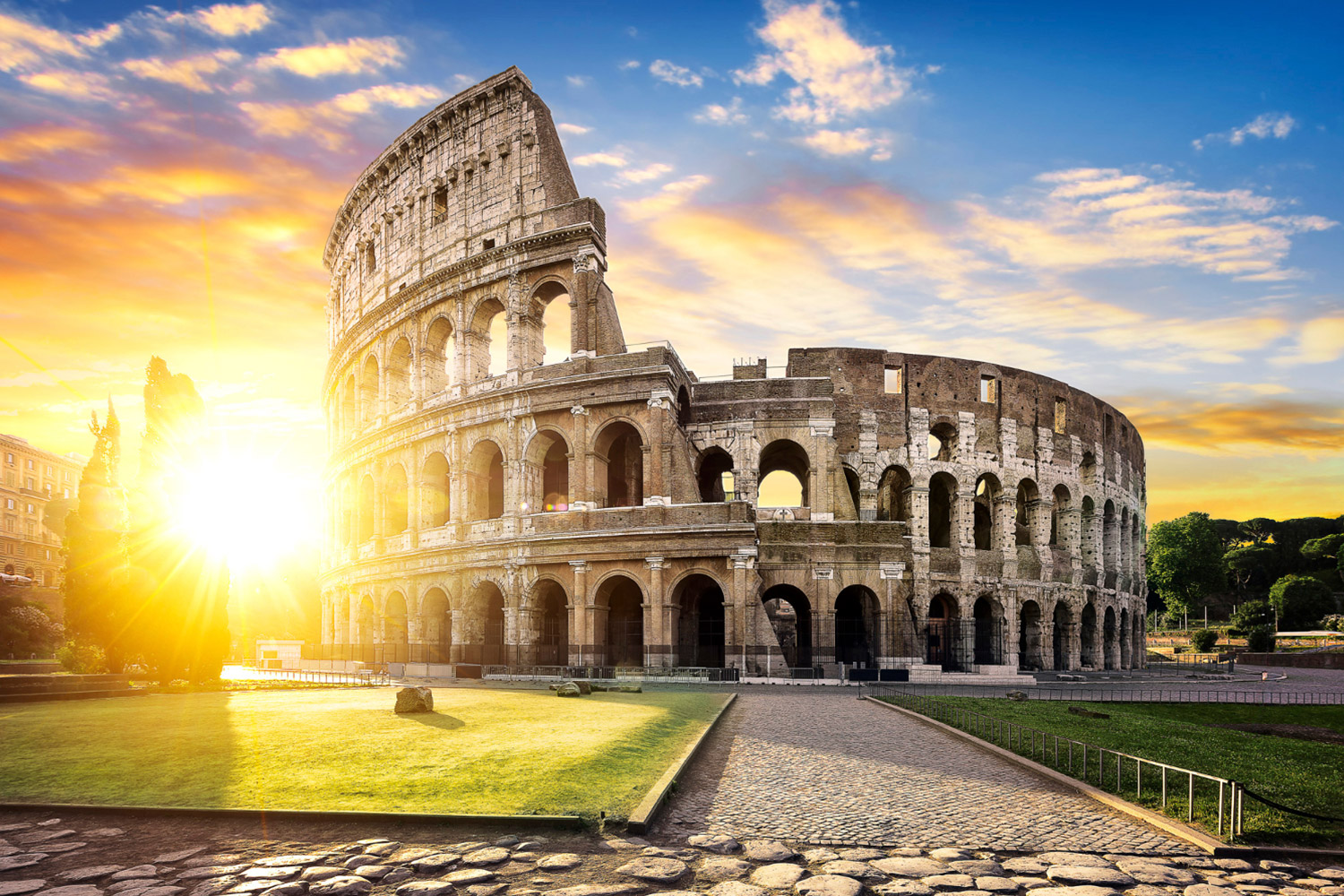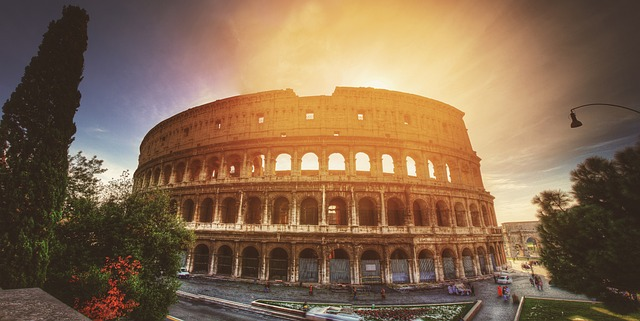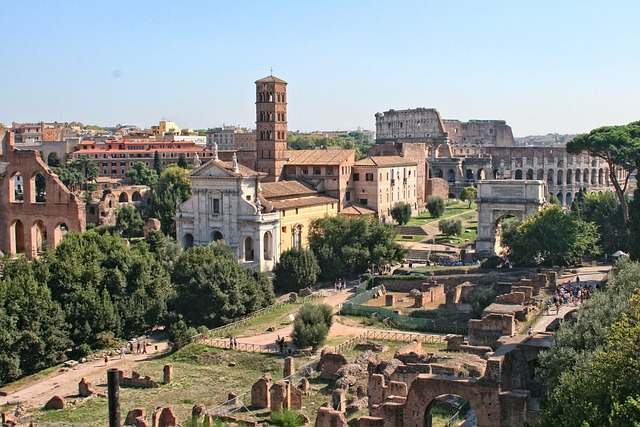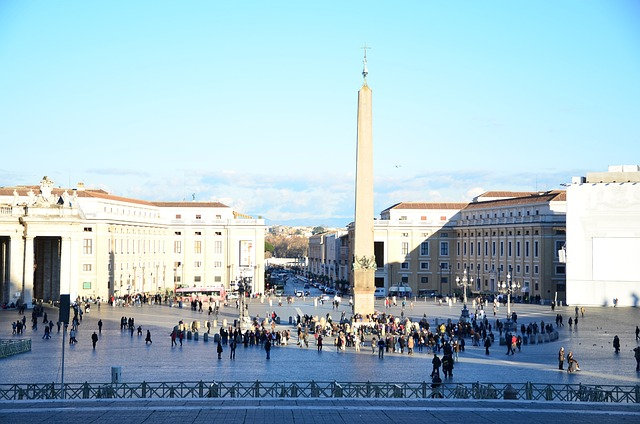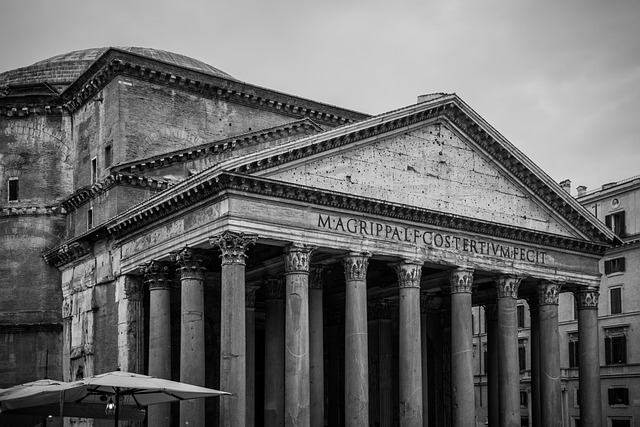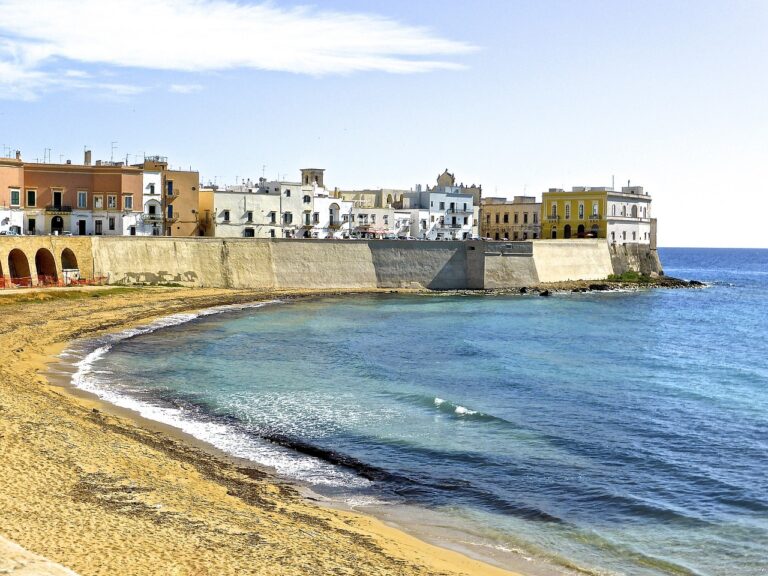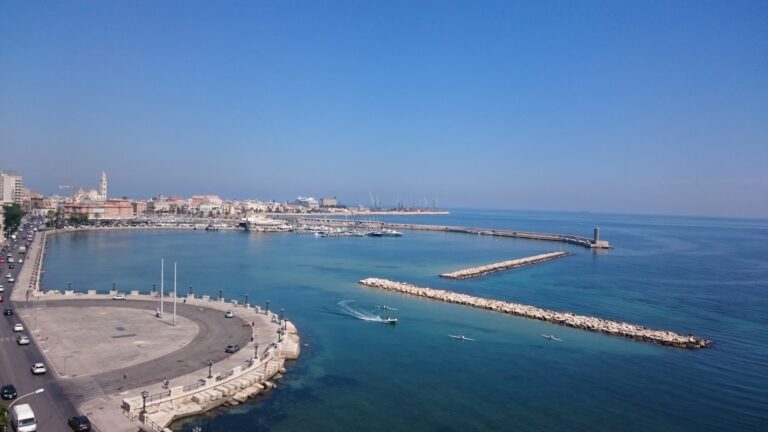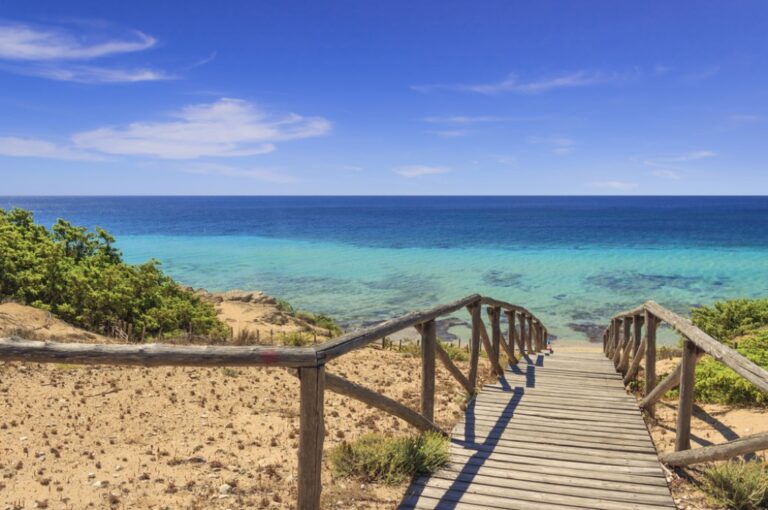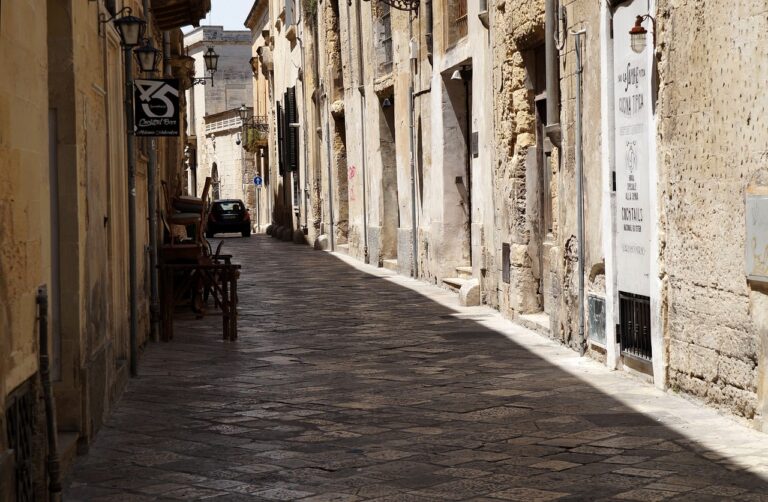Ultimate Guide to the Top Things to Do in Rome: Discovering the Eternal City
Embarking on a Roman holiday? Our definitive list of things to do in Rome streamlines your itinerary, spotlighting must-see attractions, delectable Italian cuisine, and the city’s hidden gems. This no-nonsense guide serves up concise, actionable insights to help you soak up Rome’s timeless wonders—from the Colosseum’s imposing arena to the bliss of sipping espresso in a quaint piazza. Start your journey with us and experience the best of Rome, all laid out clearly and simply.
Key Takeaways
- The Colosseum stands as a historical cornerstone for visitors in Rome, presenting a narrative of ancient power and architecture, with the option of enhanced tours for a deeper experience.
- Beyond the Colosseum, Rome’s plethora of historic sites includes the Roman Forum, Palatine Hill, Vatican City, Pantheon, and Trevi Fountain, each offering a unique glimpse into the city’s rich heritage.
- Rome’s cultural and gastronomic tapestry extends beyond its landmarks to vibrant piazzas, exquisite restaurants, tranquil gardens, and bustling nightlife, ensuring a diverse and enriching travel experience.
Unveiling the Colosseum
Step into the world’s largest amphitheater and behold the Colosseum, a quintessential symbol of Rome’s enduring legacy. Constructed in A.D. 72, it took 10 years and the sweat of 60,000 slaves to build this colossal structure, a testament to the might of the ancient Roman Empire. As you navigate its ancient corridors, the air hums with echoes of gladiatorial contests, public spectacles, and the roar of a thousand spectators. The Colosseum’s historical and architectural significance makes it an essential visit for those looking to grasp the essence of Roman history.
Often referred to as the ‘Eternal City’, Rome’s history is epitomized by the Colosseum’s presence. Its imposing silhouette, reflecting the grandeur of ancient times, conjures images of mighty emperors, fearless gladiators, and spellbound spectators. Teetering between a turbulent past and a vibrant present, the Colosseum stands as a living testament to Rome’s intriguing saga. Unfolding layers of history, it invites you into a captivating narrative of power, ambition, and architectural prowess.
The Colosseum, an enduring symbol of Rome’s past, is just the first step to discovering the soul of this magical city.
Guided Tours
Enhance your Colosseum experience with guided tours and transport yourself back in time. Imagine stepping through the Gladiator’s Gate onto the reconstructed arena floor, standing where warriors once fought. Wouldn’t it be fascinating to embark on a full-day exploration of Rome, including the Vatican, and end the day with an exclusive night tour of the Colosseum? These tours offer an intimate and informative visit, allowing you to delve deeper into the stories etched into the stone walls of this ancient amphitheater.
For popular attractions like the Colosseum and Vatican, consider a guided tour to ensure a more intimate exploration without the large crowds. And if it’s your first time visiting Rome, hop-on hop-off tours are a convenient way to navigate the city. These tours provide commentary, WiFi, and the flexibility to explore major attractions at your own pace. After all, isn’t the joy of travel in the freedom to explore and discover at a pace that suits you?
Best Time to Visit
When is the best time to step into the heart of ancient Rome and explore the grandeur of the Colosseum? To avoid the extreme heat and humidity, it’s best to visit Rome from April to mid-June, or from mid-September to the end of October. And what about the crowds? Beat the rush and start your day early. The Colosseum opens its gate to history enthusiasts at 9 am, allowing for a serene exploration before the crowds descend.
Do remember to check the Colosseum’s opening hours, which vary throughout the year. It’s also closed on January 1st, May 1st, and December 25th. So, plan your visit accordingly, and get ready to experience the awe-inspiring legacy of the Roman Empire in all its glory.
Nearby Attractions
Once you’ve soaked in the magnificence of the Colosseum, why not explore some nearby attractions? Just a stone’s throw away is the Temple of Venus, a significant structure from Emperor Hadrian’s reign, offering visitors a beautiful photo opportunity. And for those interested in combining spectacular views with dining, head to Ferro 54 bar. Here, you’ll find unprecedented sights from beneath the Castel Sant’Angelo, perfectly paired with a sumptuous Italian meal.
As you explore these nearby attractions, you’ll find that the Colosseum is not just a single landmark but the center of a rich historical landscape. Each site unfolds a different chapter of Rome’s story, offering fascinating insights into its glorious past. So, set out to explore, and let the city’s history guide your way.
Delving into the Roman Forum and Palatine Hill
From the grandeur of the Colosseum, let’s venture to the Roman Forum and Palatine Hill, two iconic sites that boast unparalleled historical significance. Walking through the Roman Forum is like flipping through the pages of a history book, each step revealing a new chapter of Rome’s past. The Roman Forum and Palatine Hill are not just archaeological sites; they are the beating heart of Ancient Rome, pulsating with tales of triumphs, treachery, and time’s relentless march.
From the summit of Palatine Hill, the city unfurls beneath you. Enjoy epic views over the Roman Forum, with the impressive backdrop of the Colosseum. It’s not just a sight to behold but a testament to Rome’s undying allure. So, lace up your walking shoes and prepare to delve deep into the fascinating remnants of the city’s illustrious past.
Archaeological Highlights
As you wander through the Roman Forum, each structure tells a story of power, faith, and societal functions. Stand before the Temple of Julius Caesar and imagine the political power and divine status it symbolized, marking Caesar’s deification and burial within the city. Walk down the Via Sacra, the central thoroughfare, still marked by the wear of countless Roman footsteps over millennia.
Witness the Curia Julia, one of the most intact ancient structures that once housed the Roman Senate. Then, visit the Temple of Vesta, representing ancient religious practices with its association to the vestal virgins and maintenance of Rome’s Eternal Flame. These archaeological highlights not only offer a glimpse into the past but also a profound understanding of the forces that shaped Rome’s history and culture.
Panoramic Views
From the summit of Palatine Hill, prepare for a breathtaking spectacle. As the city stretches out below, the panorama unfurls to reveal a skyline punctuated by the Colosseum’s silhouette and the Roman Forum’s ancient ruins. This is more than just a viewpoint; it’s a window into Rome’s grand past and vibrant present.
As the sun dips below the horizon, painting the sky in hues of pink and orange, the view from the top of Castel Sant’Angelo becomes even more enchanting. There, visitors can enjoy incredible views that stretch across the Tiber, encompassing the rooftops of Rome. So, leave your worries behind, breathe in the crisp air, and let the beauty of Rome’s skyline captivate you.
Combining with Colosseum Visit
What’s better than exploring the Colosseum, the Roman Forum, and Palatine Hill individually? Combining all three visits into one exhilarating journey through the heart of ancient Rome! When you purchase a standard Colosseum entry ticket, you also receive complimentary access to the Roman Forum and Palatine Hill. This means you can explore three iconic ancient sites with just one ticket. This way, you can maximize your experience, exploring all three iconic sites with a single ticket that remains valid for 24 hours from the first use.
After your historical exploration, why not cap off your day with an aperitivo at The Court? Despite the premium price, guests are treated to stunning views and a generous selection of snacks. So, whether you’re a history buff or a first-time visitor, combining these visits ensures you get the most out of your time in Rome.
Vatican City Wonders
From the echoes of gladiators in the Colosseum and the panoramic views from Palatine Hill, our journey takes us to the Vatican City, the smallest independent city-state in the world, recognized for its immense cultural, religious, and historical significance. Here, landmarks such as St. Peter’s Basilica and the Vatican Museums beckon, offering profound spiritual experiences to people of any faith.
At the heart of the Vatican City stands St. Peter’s Basilica, a pinnacle of Renaissance architecture, welcoming visitors with its elliptical St. Peter’s Square, designed by Gian Lorenzo Bernini. The Vatican Museums and the Sistine Chapel house an immense collection of art historical masterpieces, offering different tour experiences such as early morning, evening, and VIP after-hours tours.
So, ready to uncover the treasures of the Vatican City?
St. Peter’s Basilica
St. Peter’s Basilica is no ordinary church. It stands as the largest church in the world, featuring:
- a lavish interior
- the tomb of Saint Peter beneath the high altar
- Michelangelo’s dome design
- Bernini’s bronze baldachin over the papal altar
As you step inside, your eyes are drawn to the artistic masterpieces that adorn the basilica.
The best time to visit St. Peter’s Basilica to avoid long waits is in the morning. As you navigate its grand corridors, you’ll find over a hundred tombs, including those of several popes. And if you’re up for a challenge, consider climbing to the top of Michelangelo’s dome for an admission fee. The climb may be steep, but the breathtaking views of the city from the top are worth every step.
Vatican Museums
The Vatican Museums and the Capitoline Museums are treasure troves of art and history. They house immense collections of art historical masterpieces, collected by the Popes over centuries. As you navigate the museums’ vast corridors, you’ll come across remarkable artifacts, sculptures, paintings, and tapestries, each piece telling a unique story.
Immerse yourself in the rich tapestry of Rome’s past, exploring the varied roles of the popes through history and the effects they’ve had on both religious and world affairs. Enhance your exploration with the “Breakfast at the Vatican” ticket, providing you not only with a morning meal but also with earlier entry to the Vatican, allowing for a more tranquil visit before the general public arrives.
Sistine Chapel
No visit to the Vatican City is complete without stepping into the Sistine Chapel. As you enter, the chapel’s rich collection of art and artifacts unfolds before you, each piece a testament to the artistic prowess of its creators. The star attraction, of course, is Michelangelo’s iconic ceiling artwork. This breathtaking piece of art is celebrated for its:
- artistic significance
- complexity
- vivid colors
- intricate design
It captivates viewers with its beauty and detail.
From the intricate frescoes on the walls to the ornate details of the ceiling, the Sistine Chapel holds a myriad of wonders. Each corner you turn, each artwork you gaze upon, tells a story of faith, artistry, and human achievement. As you stand in the quiet chapel, take a moment to appreciate the remarkable marriage of art and faith that unfolds before your eyes.
Marveling at the Pantheon
From the spiritual depths of the Vatican City, let’s journey to the Pantheon, another of Rome’s architectural marvels. Originally commissioned by Marcus Agrippa, this ancient Roman temple now serves as a Catholic church, the Santa Maria ad Martyres. As you stand before the Pantheon, take a moment to marvel at its breathtaking architecture. The dome, believed to be designed by Apollodorus of Damascus, is a testament to the marvels of Roman architecture.
The sheer size of the Pantheon is awe-inspiring. Its interior dome was the largest of its kind upon construction, and even today, it continues to captivate visitors with its grandeur. Witness the intricate coffered design of its ceiling, the distinctive oculus at its center, and the lavish adornment of marble and gilt. The Pantheon isn’t just a building; it’s a living testament to Rome’s architectural prowess and artistic legacy.
Architectural Features
As you step inside the Pantheon, look up. The rotunda’s domed ceiling, the largest of its kind upon construction, is a marvel to behold. The aesthetic value of the dome is enhanced by five rings of 28 rectangular coffers, intricately laid out on the coffered ceiling. And then, at the very center, you’ll find the oculus, a 27-foot wide opening that serves as a natural light source and a connection to the environment.
The Pantheon’s architectural design has had a profound impact globally, influencing structures such as the U.S. Capitol rotunda and Renaissance architectural works. As you explore its interior, take a moment to appreciate the ingenuity and skill that went into its construction.
The Pantheon, with its breathtaking architecture and remarkable design, offers a unique insight into the architectural prowess of ancient Rome.
Historical Background
The Pantheon you witness today is not the original structure. It was initially constructed around 25 B.C. by Marcus Agrippa. However, the original building was destroyed in a fire and later rebuilt under the reign of Roman Emperor Hadrian around 126-128 A.D.
The Pantheon’s structure showcases the construction techniques of its time, primarily using bricks and concrete. As you explore the Pantheon, you’re not just looking at a building; you’re witnessing the architectural innovation and engineering prowess of ancient Rome. It’s a testament to Rome’s architectural legacy, standing proud for nearly two millennia.
Inside the Pantheon
Step inside the Pantheon, and the grandeur of ancient Rome unfolds before you. The walls and floor of the rotunda are adorned with marble and gilt, contributing to its majestic aura. As you walk its corridors, you’ll find the burial site of several Renaissance figures, Italian monarchs, and ancient romans.
From its impressive architecture to its rich history, the Pantheon offers an immersive experience, transporting you back in time. Whether you’re a history enthusiast or an architecture aficionado, exploring the Pantheon is like flipping through the pages of Rome’s glorious past. So, step inside and let the echoes of antiquity guide your way.
Trevi Fountain: Rome’s Iconic Landmark
Let’s now journey to one of the world’s most famous fountains, the Trevi Fountain. Nestled in the heart of Rome, the fountain is a spectacle of baroque art and a testament to the city’s rich history. Designed by Nicola Salvi and completed in 1762, the fountain showcases a facade that narrates the history of the aqueducts that supplied water to ancient Rome.
But the Trevi Fountain is more than just an architectural marvel. It’s also the stage for a beloved tradition – the coin toss. According to legend has throwing a coin into the fountain over your shoulder, will guarantee you return to Rome one day. Some even say that tossing two coins will bring love into your life, and a third coin will lead to marriage. So, when you visit, why not give it a try? Who knows, you might just find your wishes coming true!
History and Design
The Trevi Fountain is celebrated as a magnificent example of Baroque art, standing as one of the most renowned fountains in Rome. Standing at about 85 feet tall and 160 feet wide, the Trevi Fountain presents a striking spectacle. The fountain’s completion in 1762 can be credited to Giuseppe Pannini, who followed Nicola Salvi’s original design.
The fountain incorporates the facade of Palazzo Poli, a triumphal arch, and various mythical and allegorical sculptures, including the central figure of Oceanus by Pietro Bracci. The fountain’s design and history are intertwined, each element telling a story of Rome’s past. So, take a moment to marvel at this masterpiece of Baroque art and the tales it tells.
Coin-Tossing Tradition
At the Trevi Fountain, tossing coins isn’t just a whimsical act; it’s a tradition steeped in legend and romance. The coin-tossing tradition is believed to have originated from an ancient Roman custom where travelers would throw coins into water bodies to secure a safe return.
Today, the tradition lives on, with visitors from around the world tossing coins into the Trevi Fountain. Some believe that tossing one coin ensures a return to Rome, throwing two coins will help you find love with an attractive Roman, and tossing three coins ensures you’ll marry that Roman. So, when you visit, don’t forget to toss a coin into the fountain. Who knows, you might just find your dreams coming true in the Eternal City!
Visiting Tips
After a magical visit to the Trevi Fountain, why not explore some nearby attractions? Just a short walk away is:
- The Pantheon, a marvel of ancient Roman architecture that’s definitely worth a visit
- The historic Tazza d’Oro Caffè, where you can stop for an espresso
- The old-school gelateria, Giolitti, where you can enjoy a delicious scoop of authentic Roman gelato.
Remember, the best way to experience Rome is to take your time and soak in the atmosphere. Whether you’re marveling at the Trevi Fountain or sipping espresso at a local café, every moment in this city is a chance to create unforgettable memories. So, take a leisurely stroll, indulge in local treats, and let the charm of Rome sweep you off your feet.
Piazza Pursuits: Exploring Rome’s Vibrant Squares
Stepping away from Rome’s historical landmarks, let’s immerse ourselves in a different aspect of the city – its vibrant squares or piazzas. These bustling squares offer a taste of local culture and a chance to experience Rome’s lively atmosphere. Some of the must-visit piazzas in Rome include:
- Campo de’ Fiori, with its bustling market stalls
- Piazza Navona, known for its charming cafés and beautiful fountains
- Piazza di Spagna, home to the famous Spanish Steps
- Piazza del Popolo, offering stunning views of the city
- Piazza Venezia, where you can find the imposing Altare della Patria
Each piazza presents a unique slice of Roman life.
As you stroll through these squares, you’ll find yourself surrounded by architectural splendor, bustling activity, and the infectious energy of Rome. Whether you’re savoring a gelato, relaxing under the sun, or exploring market stalls with fresh produce, Rome’s vibrant squares offer an authentic taste of the city’s local culture.
So, why wait? Let’s dive into the heart of Roman life and experience the city like a local.
Piazza Navona
Let’s start our piazza pursuits at Piazza Navona, a vibrant square that’s always buzzing with activity. Piazza Navona features a vibrant mix of cafes, shops, street performers, and impressive monuments, making it a must-visit destination. As you explore the piazza, you’ll find artists sketching portraits, musicians playing melodies, and vendors selling souvenirs.
And if all that exploring makes you hungry, there’s no shortage of places to grab a bite. Camillo on Piazza Navona offers visitors the opportunity to enjoy Italian coffee or Aperol spritz in the heart of the piazza. If you’re looking for a more authentic culinary experience, explore the side streets off Piazza Navona for local dining options.
Piazza Navona is more than just a square; it’s a vibrant microcosm of Roman life that’s sure to captivate you.
Piazza di Spagna
Next, let’s head over to Piazza di Spagna, home to the iconic Spanish Steps. These steps, known as La Scalinata di Trinità dei Monti in Italian, connect the bustling piazza below with the serene Trinità dei Monti church above. As you climb the steps, take a moment to soak in the view. The Spanish Steps offer a unique vantage point to watch the world go by, making it a favorite spot for both locals and tourists.
In the spring, the Spanish Steps become a sight to behold, flanked by blooming azaleas that add a touch of color to the stone stairway. And if you’re in the mood for some retail therapy, the streets surrounding Piazza di Spagna are lined with high-end boutiques, offering a mix of international brands and Italian labels. So, whether you’re a shopaholic, a history buff, or a lover of beautiful views, Piazza di Spagna has something for everyone.
Campo de’ Fiori
For a taste of Rome’s vibrant market scene, head to Campo de’ Fiori. During the day, the square transforms into a bustling marketplace, with stalls selling fresh produce, spices, and local specialties. As you explore the market, you’ll find everything from artisanal cheeses to hand-picked olives, offering a feast for the senses.
As the sun sets, Campo de’ Fiori takes on a different vibe. The market stalls are replaced by lively bars and restaurants, making it a popular spot for nightlife. Whether you’re catching up with friends over a glass of wine or dancing the night away, Campo de’ Fiori offers a slice of Roman nightlife that’s hard to resist.
So, why wait? Dive into the vibrant energy of Campo de’ Fiori and experience Rome like a true local.
Gastronomic Adventures: Rome’s Culinary Scene
Rome isn’t just about historical landmarks and vibrant squares; it’s also a gastronomic paradise waiting to be explored. The city’s culinary scene offers an array of mouthwatering delights, from traditional Roman dishes to delicious Italian pastries. So, get ready to embark on a culinary journey through Rome, experiencing the city’s authentic cuisine and rich gastronomic heritage.
Food tours in Trastevere offer an immersive experience, leading up to six stops along cobblestone streets where participants can indulge in a variety of local specialties. But the gastronomic adventure doesn’t end there. Traditional Roman dishes such as Roman-style tripe and oxtail stew are a must-try, with unique customs like eating Gnocchi con Sugo di Carne on Thursdays due to old fish-eating traditions on Fridays. So, whether you’re a foodie or a casual diner, Rome’s culinary scene promises an unforgettable gastronomic adventure.
Must-Try Dishes
When in Rome, do as the Romans do – and that includes savoring the city’s culinary delights. Start with Gnocchi con Sugo di Carne, a traditional Roman dish featuring hearty gnocchi in a rich tomato meat sauce. Then, indulge in L’Amatriciana, a beloved Roman pasta dish made with cherry tomatoes, chili peppers, pork cheek, and pecorino cheese.
But the gastronomic journey doesn’t end there. Here are some more delicious treats to try in Rome:
- Cool down with a scoop of authentic Roman gelato, known for its creaminess and natural flavorings.
- If you’re a coffee lover, try Granita di Caffe, a delicious coffee-flavored frozen delight found near the Pantheon.
- If you’re exploring Rome on a Thursday, don’t miss the chance to try the gnocchi at Osteria di Monteverde and Trattoria da Cesare al Casaletto, recommended spots for the best gnocchi experience in Rome.
So, get ready to indulge your taste buds and savor Rome’s gastronomic delights.
Food Tours
For a deeper dive into Rome’s culinary scene, consider joining a food tour. These tours offer a unique way to explore the city, combining sightseeing with gastronomic delights. As you navigate the city’s cobblestone streets, you’ll stop at a variety of eateries, sampling traditional Roman dishes and learning about the city’s culinary heritage.
Food tours are not just about tasting food; they’re about experiencing Rome’s food culture. During a food tour, you’ll:
- Learn about the ingredients that go into each dish
- Discover the traditions associated with Roman cuisine
- Experience the passion that Roman chefs bring to their craft.
So, if you’re a food enthusiast looking to explore Rome’s gastronomic scene, a food tour is the perfect way to satiate your culinary curiosity.
Best Restaurants
Rome’s culinary scene is home to a plethora of amazing restaurants. One of the most renowned is Da Enzo al 29, known for offering an authentic Italian dining experience in the heart of Trastevere. The restaurant’s popularity is evident from the waiting time, which can be around an hour to secure a table. But trust us, the wait is worth it!
If you’re looking for a place to grab a quick bite, Pane e Salame is a favorite among locals and tourists alike. Known for its fresh meats, cheeses, and handmade sandwiches, it’s the perfect spot to fuel up before exploring Rome’s historical sites. And if you’re up for a drink, pair your meal with an Aperol Spritz, a popular drink at Pane e Salame that perfectly complements the Roman tradition of Aperitivo.
Whether you’re a foodie or just love to eat, Rome’s culinary scene has something to tantalize every palate.
Off-the-Beaten-Path Discoveries
Beyond the bustling piazzas and iconic landmarks, Rome offers serene escapes from its bustling city life. Discover the city’s lesser-known gardens and tranquil parks, where you can unwind amidst verdant landscapes and soak in the city’s quieter side. From the secret garden of Palazzo Barberini to the vast lawns of Villa Celimontana, these green oases offer a tranquil retreat from the hustle and bustle of city life.
Whether you’re seeking a peaceful picnic spot or a scenic place for a leisurely stroll, Rome’s hidden gardens provide the perfect setting. Explore the architectural styles of the gardens of Palazzo Venezia, or find tranquility in the medieval cloister within Ospedale Nuovo Regina Margherita. So, take a break from the city’s bustling streets and discover the serene side of Rome.
Orange Groves and Keyhole
One of Rome’s best-kept secrets is the Orange Groves and Keyhole on Aventine Hill. This small park and viewpoint provide a unique and enchanting perspective of the city. As you peek through the keyhole, you’ll be rewarded with a perfectly framed view of St. Peter’s Basilica. It’s a magical sight that’s sure to leave you spellbound.
The Orange Groves, too, are worth a visit. Nestled on the hill, this tranquil park offers sweeping views of Rome. With its lush orange trees and peaceful atmosphere, it’s the perfect place to unwind after a day of exploration. So, step off the beaten path and discover the magic of Rome’s hidden gems.
Palazzo Altemps
For art and history enthusiasts, a visit to Palazzo Altemps is a must. This renowned historical art destination offers a quieter and more authentic experience compared to the city’s more crowded tourist spots. Here, you’ll find significant artifacts such as the Suicidal Gaul and Ludovisi Battle Sarcophagus, each showcasing a unique chapter of Rome’s rich history.
Palazzo Altemps invites art lovers and history enthusiasts to delve into the rich tapestry of Rome’s past through its unique collection at the art gallery. From the grandeur of its architecture to the stories etched into each artifact, Palazzo Altemps offers a captivating exploration of Rome’s cultural heritage.
So, step off the beaten path and immerse yourself in the city’s artistic and historical wonders.
Villa Borghese Gardens
If you’re seeking a serene escape from the city’s hustle and bustle, look no further than Villa Borghese Gardens. This tranquil oasis offers a variety of attractions, including:
- Whimsical sculptures
- Great views
- A fairground ride
- A little lake
- A replica of Shakespeare’s Globe Theatre
- A few small museums, each offering a unique experience
As you stroll through the gardens, you’ll be able to enjoy all of these wonderful features.
For fun ways of getting around Villa Borghese, consider taking a boat out on the little lake. Or, if you’re in the mood for some nightlife, head to Art Cafè in the Villa Borghese parking garage. Here, you’ll find a fashionable nightlife venue with a spacious dance floor and VIP tables, offering a diverse mix of music.
So, whether you’re seeking a peaceful retreat or a lively night out, Villa Borghese Gardens has something for everyone.
Nightlife in Rome: Bars, Clubs, and Evening Strolls
As the sun sets, Rome transforms into a city of lights, offering a vibrant nightlife scene that caters to all tastes. From cozy bars where you can savor a glass of Italian wine to lively clubs where you can dance the night away, Rome’s nightlife is as diverse as the city itself. And if you’re in the mood for something more tranquil, consider an evening stroll along the Tiber River, where the city’s beauty shines brightest under the moonlight.
Whether you’re a party animal, a culture enthusiast, or a romantic at heart, Rome’s nightlife has something for you. So, as the sun dips below the horizon, get ready to experience Rome like never before. After all, the city’s charm doesn’t end with the sunset; it’s just getting started!
Top Bars and Clubs
Rome’s nightlife offers a diverse spread of options, including:
- Terrazza Les Etoiles Rooftop bar: stunning views of St Peter’s Basilica and Castel Sant’Angelo, with cocktails priced around €18 each
- Alcazar Live: live music with a mix of different sounds, from soul and funk to house and indie
- Piper Club: live music with a mix of different sounds, from soul and funk to house and indie
For a more eclectic night out, clubs such as Lanificio 159 and Qube provide visitors with themed nights, celebrating diverse cultures and music styles from Reggaeton to queer culture. And if you’re looking for a classy evening, upscale spots like Jackie O’ and Toy Room attract different crowds, with offerings from Italian classics to modern hits by resident DJs.
So, whether you’re looking to dance the night away or indulge in a sophisticated soiree, Rome’s nightlife scene has got you covered.
Evening Walks
For a more tranquil way to experience Rome’s nightlife, consider an evening walk. As the city lights up, its landmarks take on a magical quality, offering a different perspective of Rome’s beauty. Imagine walking along the Tiber River as it reflects the city’s twinkling lights, creating a breathtaking spectacle.
A visit to Castel Sant’Angelo is particularly breathtaking at night when it bursts into light, offering phenomenal reflections and views. From the windows of Castel Sant’Angelo, visitors can enjoy frame-worthy views of St Peter’s Basilica, especially enchanting in the evening. Whether you’re a photographer seeking the perfect shot or a romantic looking for a picturesque stroll, Rome’s evening walks offer a tranquil and charming experience.
Safety Tips
While Rome is generally safe for travelers, it’s always wise to stay vigilant, especially when exploring the city’s nightlife. Here are some tips to enhance overall safety:
- Always stay aware of your surroundings
- Keep an eye on your belongings
- Be particularly vigilant in crowded areas, as pickpockets are prevalent in these spots
- Consider using money belts or theft-proof backpacks
In addition to safeguarding your belongings, be mindful of traffic when crossing streets. The city’s scooters and cars may not always yield to pedestrians. Using public transportation can be a safer option than walking at night; the Rome Metro has a nighttime bus service as an alternative. With these safety tips in mind, you can enjoy Rome’s vibrant nightlife with peace of mind.
Day Trips from Rome
After exploring the heart of Rome, why not venture beyond the city limits and discover the treasures that lie just a short journey away? Here are some of the top destinations to visit:
- The ancient ruins of Pompeii
- The charming streets of Sorrento
- The beautiful Amalfi Coast
- The historic city of Naples
- The picturesque island of Capri
Rome’s surroundings offer a wealth of experiences that are sure to enhance your Italian adventure.
Whether you’re a history buff, a nature lover, or a food enthusiast, you’ll find a day trip or even a few days’ getaway that’s just right for you. So, ready your backpack, lace up your walking shoes, and set out to uncover Italy’s hidden gems. After all, why limit yourself to the city when there’s a whole world waiting to be discovered?
Pompeii and Sorrento
Journey back in time with a day trip to Pompeii, an ancient city frozen in time by the eruption of Mount Vesuvius. Walking through its streets, you’ll catch a glimpse of life as it was nearly 2,000 years ago, from the bustling marketplace to the grand amphitheater. After exploring Pompeii, head to the charming town of Sorrento, known for its beautiful coastline, delicious cuisine, and vibrant marketplaces.
A day trip to Pompeii and Sorrento offers a unique blend of history, culture, and natural beauty. Whether you’re exploring Pompeii’s well-preserved ruins or soaking in the coastal charm of Sorrento, you’re sure to return with unforgettable memories. So, why wait? Plan your day trip from Rome and set off on an adventure that’s sure to be the highlight of your trip.
Tivoli
For a glimpse into the grandeur of ancient Roman vacation homes, venture to Tivoli. Here, you’ll find two UNESCO-listed sites: Hadrian’s Villa and Villa d’Este. These villas showcase the extravagant lifestyles of Rome’s elite, featuring vast gardens, ornate fountains, and impressive architectural details.
Whether you’re exploring Hadrian’s Villa, an opulent retreat that once belonged to Emperor Hadrian, or strolling through the terraced gardens of Villa d’Este, you’ll be transported back to a time of unrivaled luxury and grandeur. So, why not spend a day exploring these historical gems? With their stunning architecture and fascinating history, Hadrian’s Villa and Villa d’Este offer a day trip you won’t soon forget.
Other Suggestions
In addition to Pompeii and Tivoli, there are countless other destinations worth exploring on a day trip from Rome. Some of these include:
- Orvieto: a city known for its medieval charm and religious heritage
- Assisi: a town famous for its connection to St. Francis and its beautiful churches
- Ostia Antica: an archaeological site that offers a glimpse into ancient Roman life
- Florence: a city renowned for its iconic landmarks and rich history
These destinations provide culturally immersive experiences and are easily accessible by train from Rome, making them perfect for a visit during a stop at a train station.
The Royal Palace of Caserta, with its grand interiors and vast gardens, is a splendid testament to Italy’s regal past, reachable for a day visit. The Castelli Romani region invites food and wine aficionados to explore towns like Frascati and Castel Gandolfo, nestled in the hills and easy to reach by train. And for beachgoers, Santa Marinella and Sperlonga offer high-quality beaches and picturesque seaside ambiance. So, whichever path you choose, you’re sure to discover a side of Italy that’s just as enchanting as Rome itself.
Essential Travel Tips for Rome
To help you make the most of your days in Rome, here are some essential travel tips. From navigating the city’s public transportation to choosing the right accommodation, these tips will ensure your journey through Rome is as smooth as possible.
Whether you’re planning your itinerary, packing your suitcase, or exploring the city’s vibrant squares, these travel tips will help you navigate Rome like a pro. So, pack your bags, slip on your walking shoes, and get ready to uncover the treasures of Rome!
Transportation
Navigating Rome can be a breeze with the city’s efficient public transportation system. Buses are a common transportation option in Rome, and it’s advised to buy a 100-minute ticket for €1.50 in advance from local tabaccherias. These tickets are versatile and can be used across buses, trams, trains, and metros once they are activated.
Getting around Rome is part of the adventure. Whether you’re hopping on a bus to the Colosseum, taking a tram to the Pantheon, or walking through the cobblestone streets of Trastevere, each journey offers a unique glimpse into the city’s vibrant life. So, embrace the journey, and let the city’s rhythm guide your way.
Accommodation
Choosing the right accommodation can make all the difference in your Rome experience. The city offers diverse accommodation options, from luxury hotels like The St. Regis Rome to budget-friendly choices like the Borromeo Hotel. When selecting your accommodation, consider the location, amenities, and budget to ensure it suits your needs.
Choosing accommodation outside of Rome’s city center can lead to significant savings, especially if it’s well-connected to public transportation. But remember, Rome is a popular tourist destination, so it’s wise to book your accommodation well in advance. That way, you can secure the best deals and avoid the stress of last-minute bookings.
Packing List
When packing for your trip to Rome, remember to include:
- Comfortable walking shoes
- Attire suitable for the weather
- A reusable water bottle
- A small backpack for your daily essentials
As you’ll be exploring historical sites, walking on cobblestone streets, and navigating the city’s bustling squares, having the right gear can make your journey much more comfortable.
In addition to your essentials, consider carrying some cash as many smaller cafes and shops in Rome do not accept cards. And don’t forget to pack your sense of adventure! After all, you’re about to embark on a journey through one of the world’s most captivating cities. So, pack wisely, and get ready for an unforgettable Roman holiday.
Summary
As we conclude our journey through Rome, let’s take a moment to reflect on the city’s timeless allure. From the grandeur of the Colosseum to the vibrant squares of Piazza Navona, from the spiritual depths of the Vatican City to the tranquil oasis of Villa Borghese Gardens, Rome offers a rich tapestry of experiences that captivate the heart and soul.
Whether you’re a history buff, a food enthusiast, or a lover of art and architecture, Rome has something for you. Its ancient ruins whisper tales of a glorious past, its bustling squares pulse with the energy of the present, and its serene gardens offer a glimpse into a timeless future. So, why wait? Pack your bags, lace up your walking shoes, and set out to discover the Eternal City. After all, Rome wasn’t explored in a day!
Frequently Asked Questions
What shouldn’t you miss in Rome?
When in Rome, don’t miss the Colosseum, Pantheon, Roman Forum, Vatican City, Palatine Hill, Castel Sant’Angelo, Galleria Borghese, and Trevi Fountain. These are must-visit attractions for an unforgettable experience.
Can I do Rome in 3 days?
Yes, Rome can be well explored in 3 days, allowing you to visit the famous sites, enjoy delicious food, and soak in the city’s atmosphere. Enjoy your trip!
Is there anything fun to do in Rome?
Absolutely! Visiting the Vatican after the crowds have dispersed is a fantastic experience. Consider the VIP after-hours tour with aperitivo as a great alternative for a memorable visit.
What is the number 1 must see in Rome?
The number 1 must-see in Rome is the Colosseum, the largest ancient amphitheatre ever built, which still stands as the largest in the world. Go experience the history and grandeur of this iconic attraction.
What is the best time to visit Rome?
The best time to visit Rome is from April to mid-June, or from mid-September to the end of October to avoid extreme heat and humidity. These times offer pleasant weather for exploring the city.

